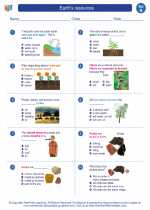Protein
Proteins are large, complex molecules that play many critical roles in the body. They are made up of smaller units called amino acids, which are linked together in a specific sequence. Proteins are essential for the structure, function, and regulation of the body's tissues and organs.
Structure of Proteins
Proteins have a complex three-dimensional structure that is crucial to their function. The sequence of amino acids determines the protein's structure, which in turn determines its function. There are four levels of protein structure: primary, secondary, tertiary, and quaternary.
Primary Structure
The primary structure of a protein is the specific sequence of amino acids that make up the protein chain.
Secondary Structure
The secondary structure refers to the local folding of the polypeptide chain into structures such as alpha helices and beta sheets.
Tertiary Structure
The tertiary structure is the overall three-dimensional shape of the protein, determined by interactions between the amino acid side chains.
Quaternary Structure
Some proteins are composed of multiple polypeptide chains that come together to form a functional protein complex. This is known as the quaternary structure.
Functions of Proteins
Proteins have a wide range of functions in the body, including:
- Enzymes: Proteins that catalyze biochemical reactions in the body.
- Structural support: Proteins such as collagen provide structure and support to tissues like skin, tendons, and bones.
- Transport: Proteins like hemoglobin transport molecules such as oxygen in the blood.
- Immune function: Antibodies are proteins that help the immune system recognize and fight off foreign substances.
- Hormones: Proteins such as insulin act as chemical messengers in the body.
- Contractile proteins: Proteins like actin and myosin are responsible for muscle contraction.
Sources of Protein
Protein is found in a variety of foods, including:
- Meat and poultry
- Fish and seafood
- Eggs and dairy products
- Legumes (beans, lentils, chickpeas)
- Nuts and seeds
- Grains such as quinoa and amaranth
Protein Study Guide
Use the following questions to guide your study of proteins:
- What are the building blocks of proteins?
- Describe the four levels of protein structure.
- What are the main functions of proteins in the body?
- Give examples of foods that are good sources of protein.
◂Science Worksheets and Study Guides First Grade. Earth's resources

 Worksheet/Answer key
Worksheet/Answer key
 Worksheet/Answer key
Worksheet/Answer key
 Worksheet/Answer key
Worksheet/Answer key
 Vocabulary/Answer key
Vocabulary/Answer key
 Vocabulary/Answer key
Vocabulary/Answer key
